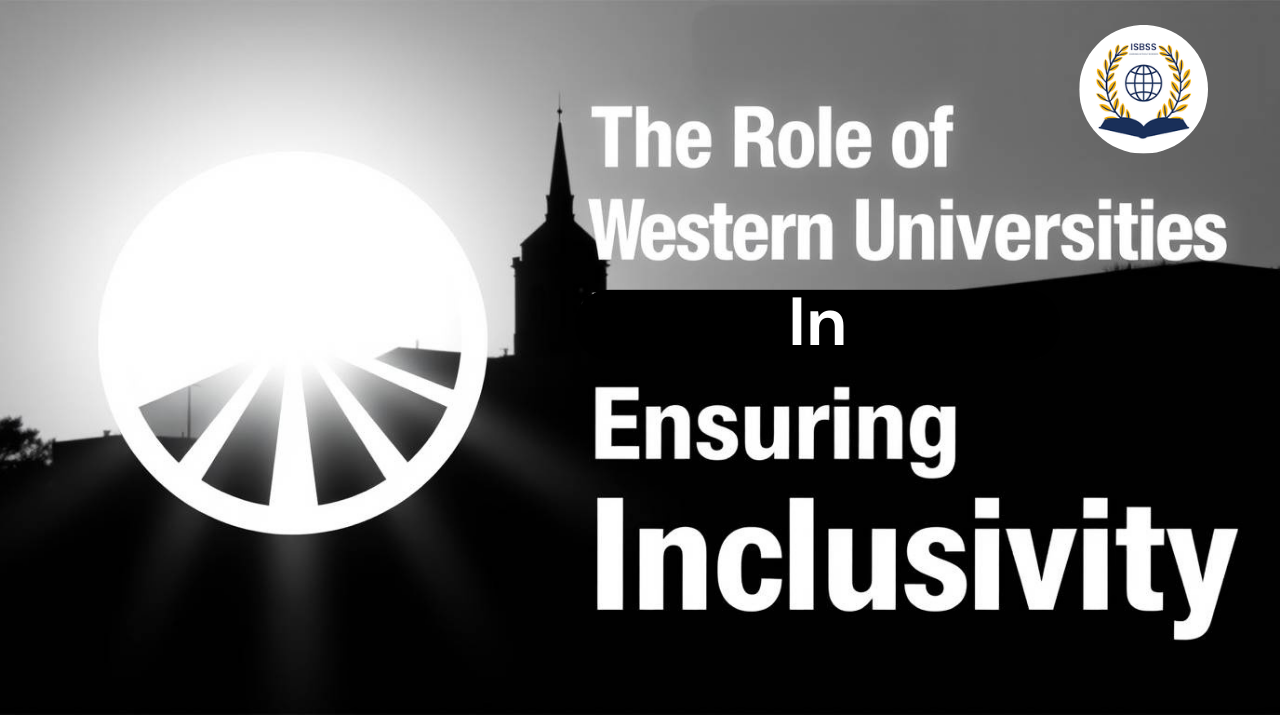
The Role of Western Universities in Ensuring Inclusivity
The Role of Western Universities in Ensuring Inclusivity. More than promises, it’s time for action.
When people talk about inclusivity in education, especially in Western universities, the focus is often on how diverse the student body looks on paper. But the real question is: what happens after the admissions letter? For many international and minority students, the experience doesn’t always match the hype.
In today’s world where more students are studying abroad, Western universities have a big responsibility. It’s not enough to attract students from different backgrounds. They need to make sure those students actually feel welcome, supported, and included.
What Does Inclusivity Really Mean?
Let’s be honest- “inclusivity” gets thrown around a lot these days. But what does it actually look like in real life, especially in education?
Inclusivity means no student ever feels like they have to shrink themselves to fit in. It means creating a space where you don’t have to leave parts of who you are at the door just to belong.
Real inclusivity goes deeper than ticking boxes. It’s about noticing those quiet barriers- the ones that aren’t always obvious- and doing something about them.
Because when every student feels seen, heard, and valued? That’s when real learning happens.
Diversity Beyond the Posters
It’s easy to show diversity in brochures. But inclusivity goes deeper than just putting international or minority students on university websites. It’s about who teaches the classes, who sets the rules, and who gets a seat at the table.
Diversity in higher education should also show up in leadership roles and decision-making. Students should see themselves reflected in the people guiding and supporting them-not just in the student population.
Support for International Students
International students do more than just pay high tuition. Many face real challenges: language barriers, visa issues, culture shock, and academic pressure.
Western universities need to provide ongoing support for international students through things like:
1. Mental health services that understand cultural differences
2. Academic support tailored to international learning styles
3. Help with work options and career planning
4. Clear, accessible communication about visa rules and legal matters
It’s not enough to welcome international students. Universities must be ready to support them all the way through.
Safe Spaces Matter
Students need more than classrooms and libraries. They need safe, open spaces where they can express themselves and feel protected.
This means:
1. Real conversations about race and discrimination
2. Disability services that are easy to access
3. Clear systems for reporting bias or harm
4. Creating inclusive campus environments means listening to students and making sure no one feels like they have to stay quiet to stay safe.
A Curriculum That Includes Everyone
What students learn also matters. A truly inclusive academic curriculum should reflect different voices, cultures, and histories.
This means:
- Teaching authors and thinkers from all parts of the world.
- Questioning eurocentric content and exploring global views.
- Encouraging students to think about power, history, and fairness from more than one angle.
- Education should help students understand the full world, not just one version of it.
Financial Inclusivity
Money can be a major barrier to education. Some students miss out on chances because they can’t afford them, not because they’re not smart or capable.
Western universities can help by offering:
- Scholarships for students from underrepresented groups.
- Emergency funds for students in crisis.
- Paid internships, research jobs, or work-study options that are open and fair.
- Financial inclusivity gives students the support they need to focus on learning, not just surviving.
Culture Over Checklists
Inclusivity is not just a policy. It’s a mindset. Students can tell when universities are just ticking boxes. They can also tell when people really care.
The real test of inclusivity shows up in daily life. It’s in how professors respond to unfair treatment. It’s in how classmates treat each other. It’s in how students feel when they walk into a room.
Final Thoughts
Inclusivity in Western universities is not just about being diverse. It’s about something deeper- making sure every student actually feels seen, supported, and safe. That takes more than posters or slogans. It takes real effort, honest reflection, and a commitment to do better.
Education should open doors for everyone. Not just a few. If Western universities truly want to lead on a global level, they have to create spaces where every student can grow, speak up, and belong.



